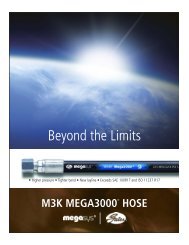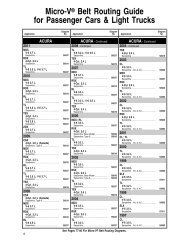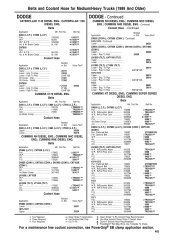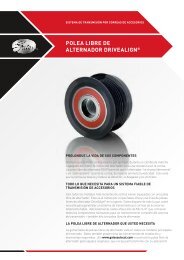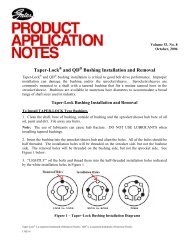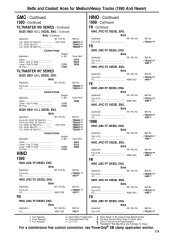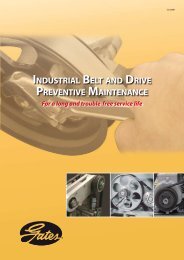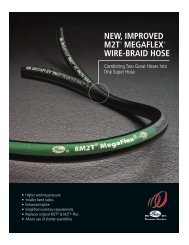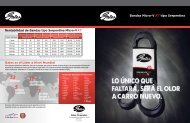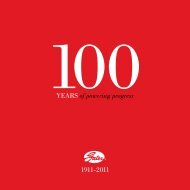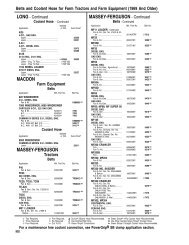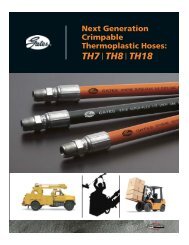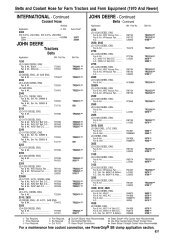Download Shaft And Hub Keyway And Key Sizes
Download Shaft And Hub Keyway And Key Sizes
Download Shaft And Hub Keyway And Key Sizes
You also want an ePaper? Increase the reach of your titles
YUMPU automatically turns print PDFs into web optimized ePapers that Google loves.
2Plain Bore Style PulleysIn larger plain bore style pulleys, a keyway must be machined into the bore with the correcttolerances. The fit between a finished pulley bore and its mating shaft must not allow relativemovement when the pulley is subjected to belt tension and torque loads. This is accomplishedwith the use of set screws, and by controlling the fit or clearance between the bore and themating shaft. Set screws do push shafts to one side of the bores causing eccentricity or radialrun-out, resulting in belt tension excursion and vibration. In order to minimize these potentiallynegative results, Gates publishes recommended shaft to bore fit tolerances for a range of shaftsizes. If cyclical or pulsating loads will be transmitted, an interference type fit is required.Interference fit tolerances for a range of shaft sizes are also published by Gates. Tablescontaining these recommended fit tolerances are available in any of the Gates Synchronous BeltDrive Design Manuals.In smaller minimum plain bore style pulleys, keys are not used. Set screws, along with the pressfit interaction between the bore and shaft, are relied upon to secure the hub to the shaft. Thistype of arrangement is generally sufficient for very light loads. In these cases, designers shouldevaluate the design loads to be sure the set screw holding torque is sufficient.Pulleys With BushingsIn order to achieve better concentricity as well as versatility in fitting numerous standard shaftsizes, tapered bushings are commonly used in pulleys. The most common bushing types used inindustrial power transmission applications are QD ® (Quick Disconnect – flanged type) and TL(Taper-Lock ® – flangeless type). Each system has its own merits and benefits.In most QD type bushings, a setscrew in the flange tightens against the key to prevent key loss inapplications subject to vibrating or pulsating loads, and in vertical shaft applications. Somebushing types are manufactured with an integral key that is formed as part of the bore. This alsoprevents potential key loss. Both types of bushings are popular in vertical shaft installations.<strong>Key</strong>less BushingsBesides keyed bushings, several types of keyless locking devices using a tapered wedge principleare available. These keyless bushings convert clamping action between inner and outer taperedrings into radial pressure that locks the device to the shaft and pulley. <strong>Key</strong>less bushings exertsignificantly greater radial hub loads compared to conventional tapered and keyed bushings.This requires that hubs be sufficiently sized to handle the increased hoop stress loads. <strong>Key</strong>lessbushings transmit high torque loads while maintaining excellent concentricity (minimal radialrun out and belt tension excursion). However, they are available in a limited number of boresizes and tend to cost more than conventional tapered and keyed bushings.Standard <strong>Key</strong> and <strong><strong>Key</strong>way</strong> SizingFigure 1 describes the dimensions used when specifying English and Metric keys and keyways.English Dimensions:<strong><strong>Key</strong>way</strong>: W x T 1<strong>Key</strong>: W x TMetric Dimensions:<strong><strong>Key</strong>way</strong>: W x h<strong>Key</strong>: W x TQD ® is a trademark of Emerson Electric.Taper-Lock ® is a trademark of Reliance Electric



